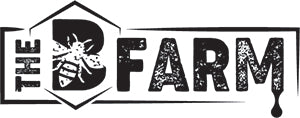Since beekeeping is such a popular industry and hobby across all regions of the United States, academics, corporate leaders, and beekeepers alike are curious to know what type of honeybee will yield the most honey in various regions. A Penn State University research team decided to put this question to the test. They set out to study northern vs southern honeybee queens and answer the question, “What’s the difference between these types of queen bees?” They accomplished this by measuring the success of 60 hives in central Pennsylvania, some of which had northern queens and some of which had southern ones. Learn more about the differences and similarities between the northern and southern queen honey bees.
Success in Different Environments
In spring 2013, the researchers created 60 colonies in three central Pennsylvania locations to conduct the study. Some queens came from northern breeders in Vermont and others from southern breeders in Texas and Florida.
The scientists found small but significant genetic variances between the stocks from the northern and southern areas. But the differences between northern and southern honeybee queens have nothing to do with their success in a particular environment. So which honey bee produces the most honey? This is an important consideration for beekeepers because honey flow means survival of their colony. But the answer is neither. Even though the northern queens were in their adapted climate, their hives didn’t create more honey than the southern ones.
Survival Variables
That said, the hives with more honey and bees in the fall had a stronger likelihood of making it through the winter. Honeybees were more likely to be prepared for the winter if they lived near pollinating resources. For instance, a hive in farmland had a survival rate of 80 percent. However, another hive that that was mostly in the woods had a survival rate of 50 percent.
The Main Takeaway
The primary takeaway in this study on the different types of queen bees was that location, not genetics, impacts the success of a honeybee hive. Queens don’t need to be native to their areas to develop thriving hives. However, they’re more likely to succeed if their hive is close to areas bountiful in pollinating plants.
More than anything, this study is a reminder of the importance of local resources for honeybee success. If honeybees don’t have the proper environment to thrive, they won’t survive the winter, regardless of their queen’s place of origin.
If you want to explore and experiment with the wonderful world of beekeeping yourself, you can purchase VSH queen bees for sale online. You can learn more about queen bees by exploring our blogs.
